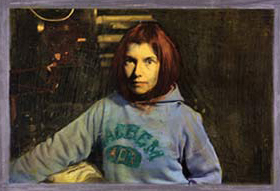 About the Project
About the Project
Medical science still cannot say what causes schizophrenia, but a few things are certain: that schizophrenia is global, that it shows up in just about every culture, and that it is very widespread. One out of every one hundred people in a given population are afflicted by schizophrenia (there are 2.5 million schizophrenics in the United States today). That we come into contact with so few schizophrenics in our daily life does not mean they do not exist; it means, simply, we’ve done a good job in hiding them. They’ve been sent to homes and hospitals and halfway houses where they are less visible—and less troubling—to the rest of the population. A small percentage (and those generally whose family’s have money) are treated effectively and are functioning.
Over the past few decades, institutional homes for adults with schizophrenia and other mental disorders have multiplied on or near Coney Island in Brooklyn, New York, making the area a kind of clearinghouse for Manhattan’s mentally ill. The group homes, generally private institutions run for profit, remain the twenty-first century’s equivalent of the “back wards” of years gone by. Dona Ann McAdams has photographed in day programs, adult homes, and homeless shelters throughout the New York City area for nearly two decades, and she continues this work today. McAdams and Brad Kessler’s project focuses on a community of schizophrenics who live in a group home called the Garden of Eden. To view more images by McAdams, which participants at the Brooklyn Day Program hand-colored, visit:http://cds.aas.duke.edu/exhibits/hand&eye/hand&eyemodules/mcadams/mcadamscontainer.html
McAdams collaborated with writer Brad Kessler on their book based on this work. In the foreword, Kessler writes:
“We’ve been coming out here for some time now. Each Friday in the early morning we make our way to a building at the end of Surf Avenue. The building, which used to house the local Y, now holds the Brooklyn Day Program; it is a place for people with mental illness. People come here from all over Brooklyn but most arrive from the institutional homes nearby: The Garden of Eden up Stillwell Avenue, Surf Manor, next door; Seabay, Seaport, or Mermaid Manor, all a short bus ride away. People come to Brooklyn Day for medication and meals, for counseling and group therapy, for classes in music, art, social, and daily life skills. They come to Brooklyn Day to pass the hours and stay off the streets. They come, in most cases, because they’ve nowhere else to go.
The fog has not yet lifted off the island, and a bank of fluorescent lights burn above. Twenty-five people have shown up for Dona’s Friday art workshop, and they’re settling into seats, choosing crayons, pencils, and pads of paper. The participants all suffer from an assortment of illnesses (including schizo-affective, bipolar, and compulsive disorders), yet most have been diagnosed with schizophrenia. Many have been institutionalized before, some for decades, others for shorter stays, and nearly all are on heavy medication, usually anti-psychotics (such as Mellaril, Prolixin, Haldol, or Clozaril).
Jacob T. is walking around the classroom taking a survey. He’s trying to find out who makes more money, Dean Martin or Jerry Lewis. Jacob is in his early sixties, wears a gray wool cardigan and glasses as thick as bottle bottoms.” To read the entire essay: Garden of Eden.





